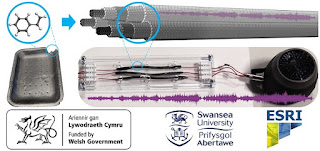VTT’s New Technology to Develop Bio-based PEF Plastic Using Citrus Peels

New technology developed at VTT enables the use of pectin-containing agricultural waste, such as citrus peel and sugar beet pulp, as raw material for bio-based PEF-plastics for replacing fossil-based PET. The carbon footprint of plastic bottles can be lowered by 50% when replacing their raw material of PET with PEF polymers, which also provides a better shelf life for food. Significant Advantage Over Traditional Means VTT’s technology has significant advantages for making bio-based PEF plastics. The technology uses a stable intermediate to produce FDCA (2,5-furandicarboxylic acid), one of the monomers of PEF, which enables a highly efficient process. In addition, utilizing pectin-containing waste streams opens new possibilities for the circular economy of plastics. VTT’s unique scale-up infrastructure from laboratory to pilot scale ensures that this new technology will be brought to a technology readiness level that will allow polymer manufacturers’ easy transition to full scale. Rep




